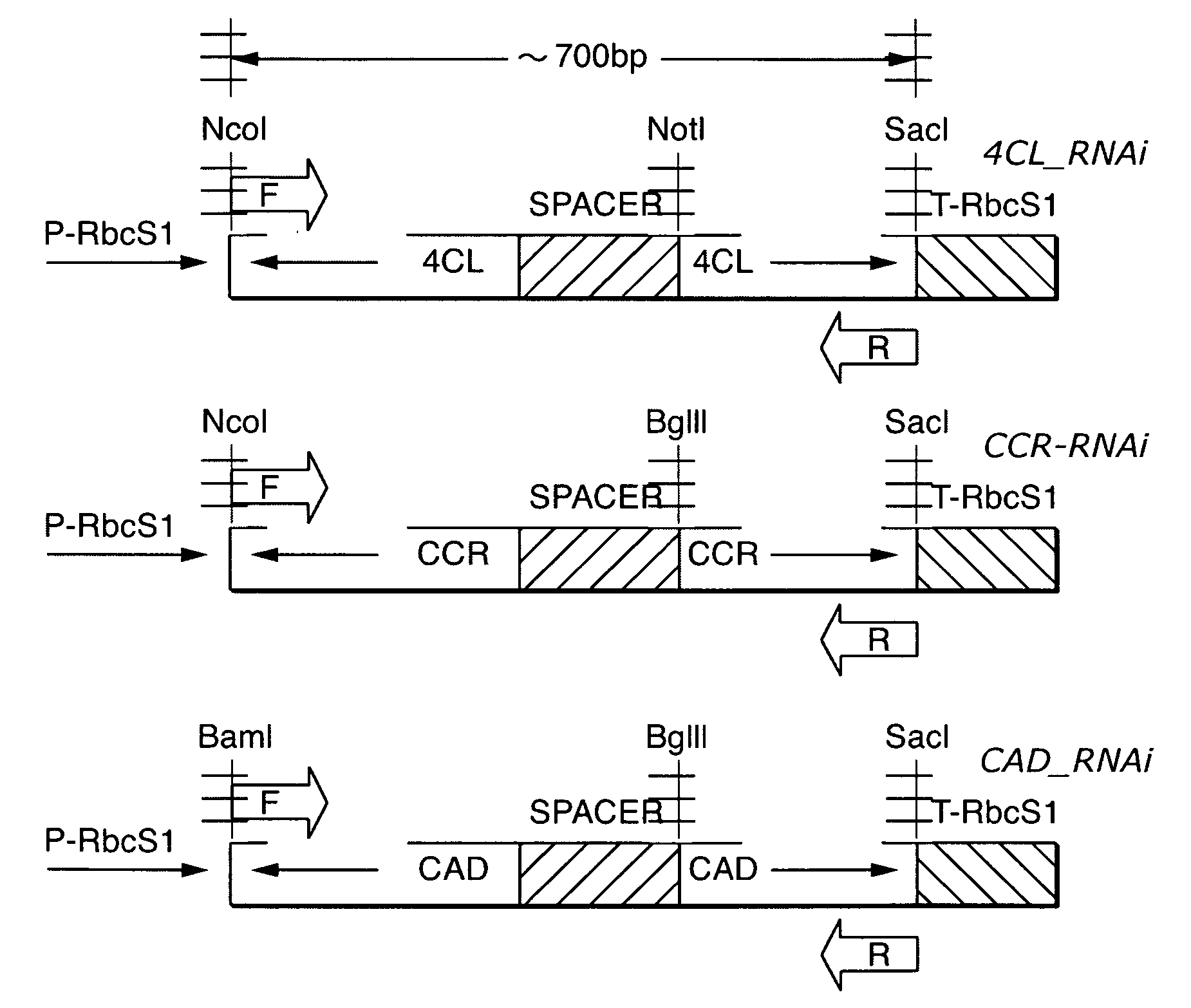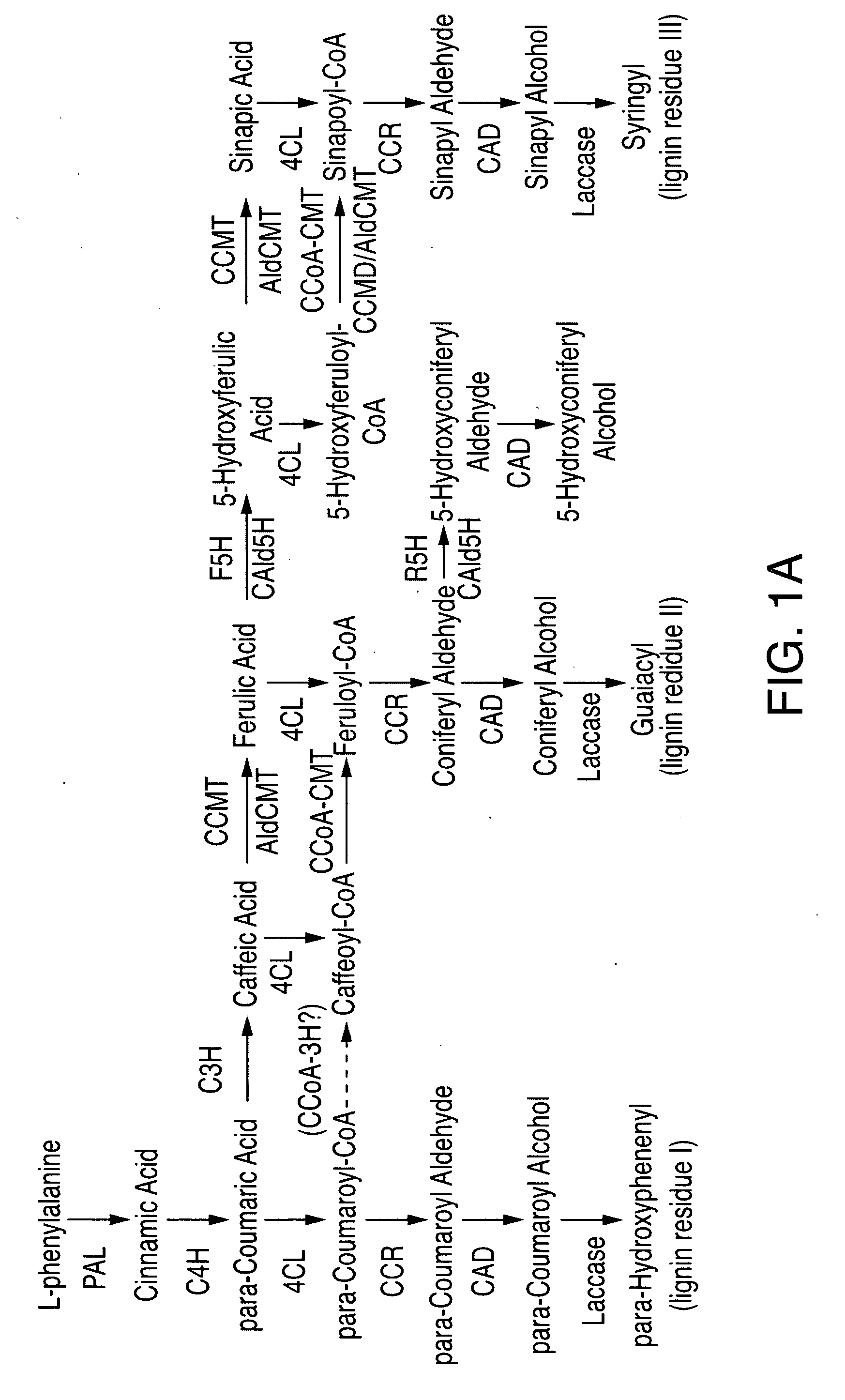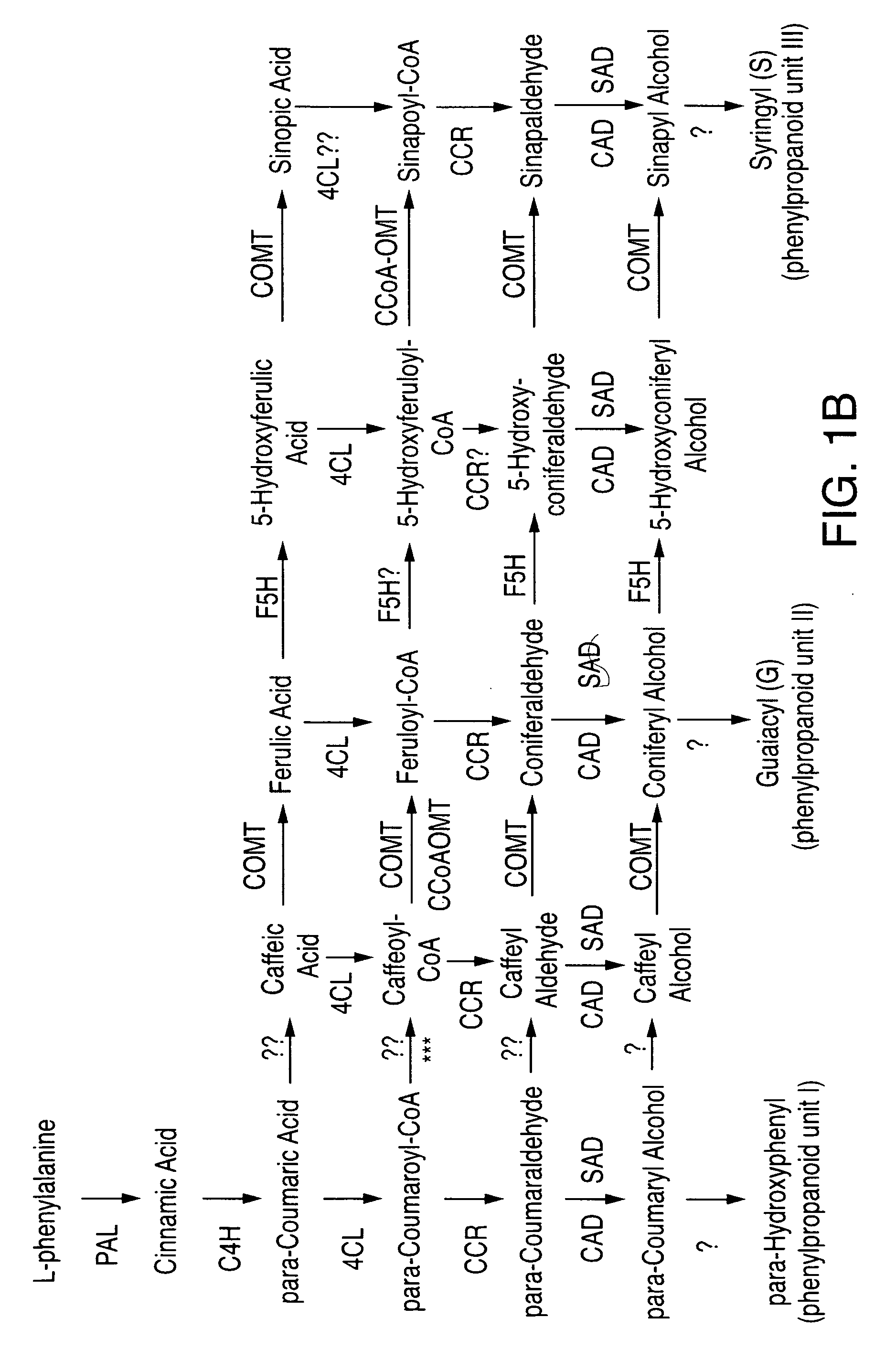Altering regulation of maize lignin biosynthesis enzymes via RNAi technology
- Summary
- Abstract
- Description
- Claims
- Application Information
AI Technical Summary
Benefits of technology
Problems solved by technology
Method used
Image
Examples
example i
[0166]This example describes exemplary materials and methods for assays used during the development of the present inventions.
Lignin Analysis.
[0167]Briefly, sections from the base of mature stems are lyophilised, ground and analysed by different methods, Halpin et al. (1998) The Plant Journal, 14:545; herein incorporated by reference. Klason determinations were performed on the dried insoluble cell wall residue (CWR) of samples soxhlet extracted with toluene / ethanol, ethanol and water according to the method of Effland, 1977, TAPPI 6: (10); herein incorporated by reference). CWR (300 mg) was treated with 3 ml 72% w / v sulphuric acid (2 h; 20° C.) then diluted to 5% acid and boiled under reflux (3 h). The sample was filtered in a tared n° l porosity glass cinter, washed, dried (100° C.; 20 h) and weighed. Thioacidolysis was performed on 10 mg CWR using 0.2N BF3 etherate in 8 ml of dioxane-ethanethiol (v / v, 9 / 1). After 4 h at 100° C., monomeric products released from lignin were analys...
example ii
[0172]This example describes exemplary compositions and methods for obtaining cDNAs of the corn lignin biosynthesis enzymes and RNAi constructs of the present inventions.
[0173]An ImpactVector™ for cytoplasmic expression, comprising a light-regulated Asteraceous chrysanthemum Ribulose bisphosphate carboxylase (RBC) (RbcS1 (rubisco)) promoter sequence, Outchkourov et al. 2003, was used for integrating RNAi constructs and transforming corn tissue. This vector comprises a universal multiple cloning site, Plant Research International of Wageningen University and Research Center (ww.pri.wur.nl / UK / products / ImpactVector).
[0174]The ImpactVector™ family enables targeting of a protein into one of 5 different subcellular compartments, of which the inventor choose cytoplasmic expression of the 1.1 vector (FIG. 5).
[0175]The plasmid BY520 contained the linked selectable marker / herbicide resistance bar (phosphinothricin acetyl transferase) gene (driven by cauliflowermosaic virus 35S promoter and th...
example iii
[0177]This example describes exemplary compositions and methods for providing co-transformed corn plants with the each of the RNAi constructs described in EXAMPLE II, FIG. 4, and a construct comprising a bar herbicide resistance gene regulated under an separate plant-specific promoter. Specifically, this example shows the transformation of maize multi-meristem primordia via Biolistic bombardment with the plasmid constructs of FIG. 4, regeneration of the transgenic plants, confirmation of the integration of the plasmid constructs into the plant genome, and confirmation of the expression of the cellulase or ligninase fusion proteins in the transgenic plant. For transformations with the constructs which do not contain a selectable marker, a selectable marker comprising the bar gene in the plasmid pDM302 (Cao et al., Plant Cell Reports 11: 586 591 (1992), herein incorporated by reference) is cotransfected into the cells with the plasmid containing the ligninase or cellulase heterologous...
PUM
| Property | Measurement | Unit |
|---|---|---|
| Structure | aaaaa | aaaaa |
Abstract
Description
Claims
Application Information
 Login to View More
Login to View More - R&D
- Intellectual Property
- Life Sciences
- Materials
- Tech Scout
- Unparalleled Data Quality
- Higher Quality Content
- 60% Fewer Hallucinations
Browse by: Latest US Patents, China's latest patents, Technical Efficacy Thesaurus, Application Domain, Technology Topic, Popular Technical Reports.
© 2025 PatSnap. All rights reserved.Legal|Privacy policy|Modern Slavery Act Transparency Statement|Sitemap|About US| Contact US: help@patsnap.com



